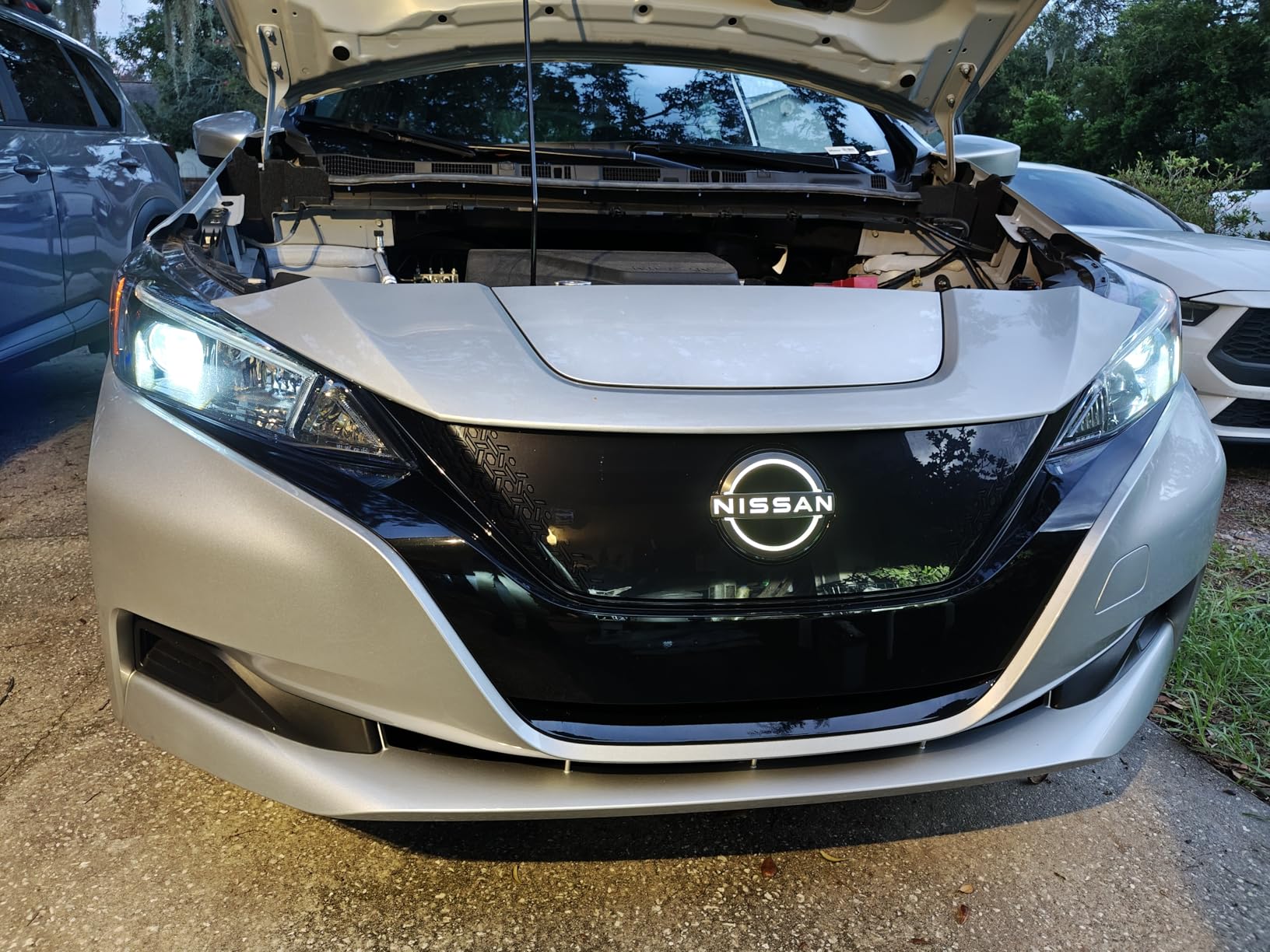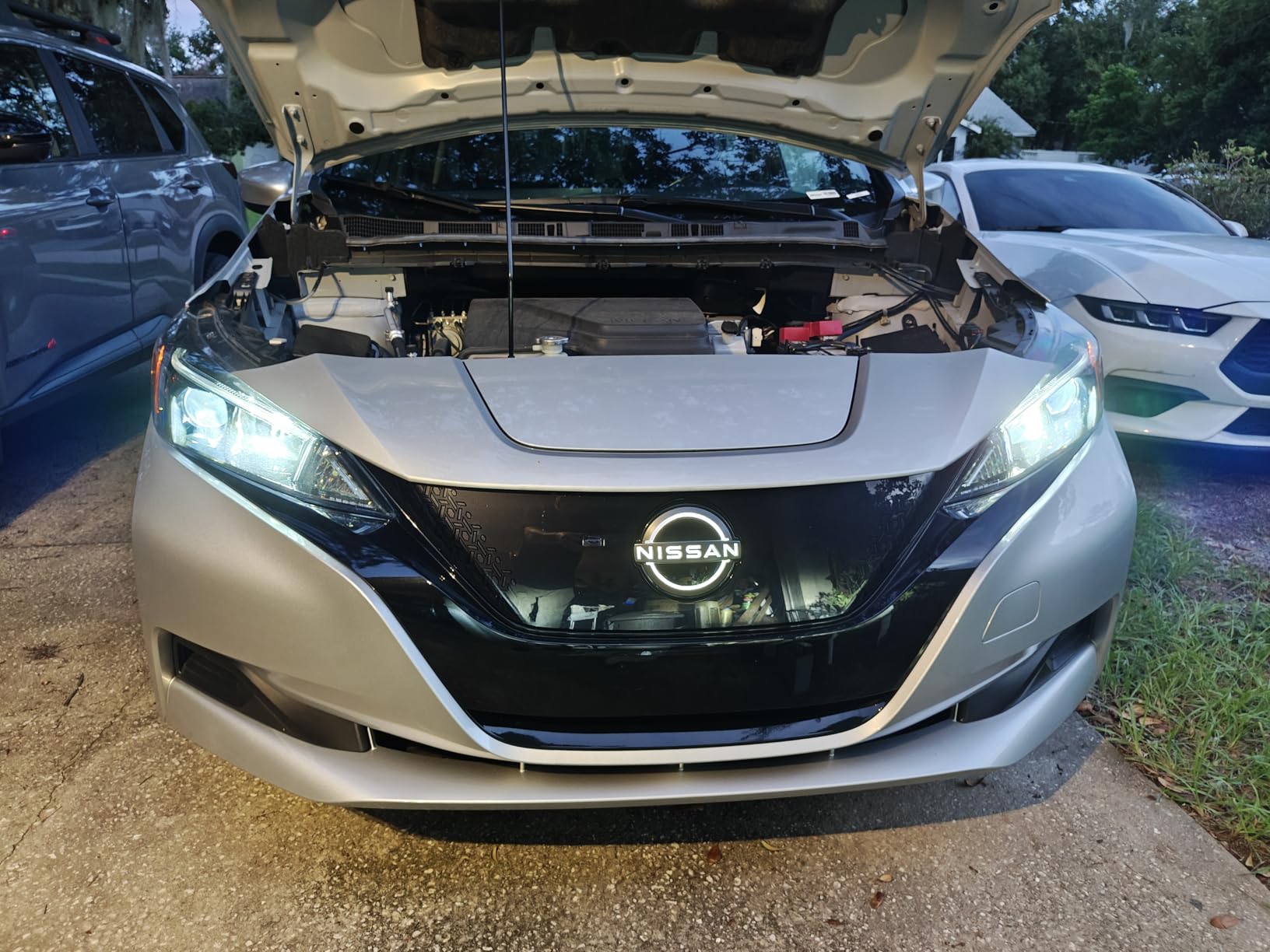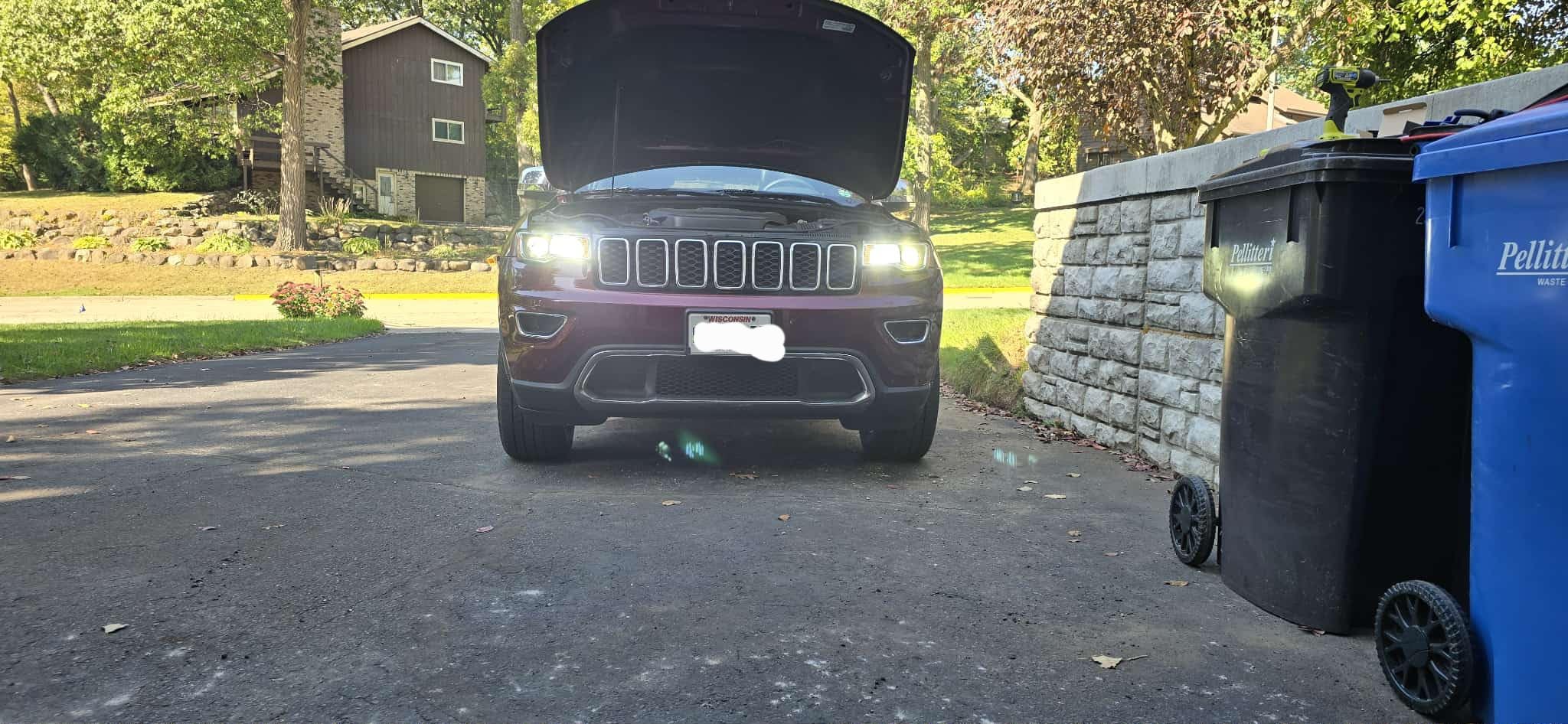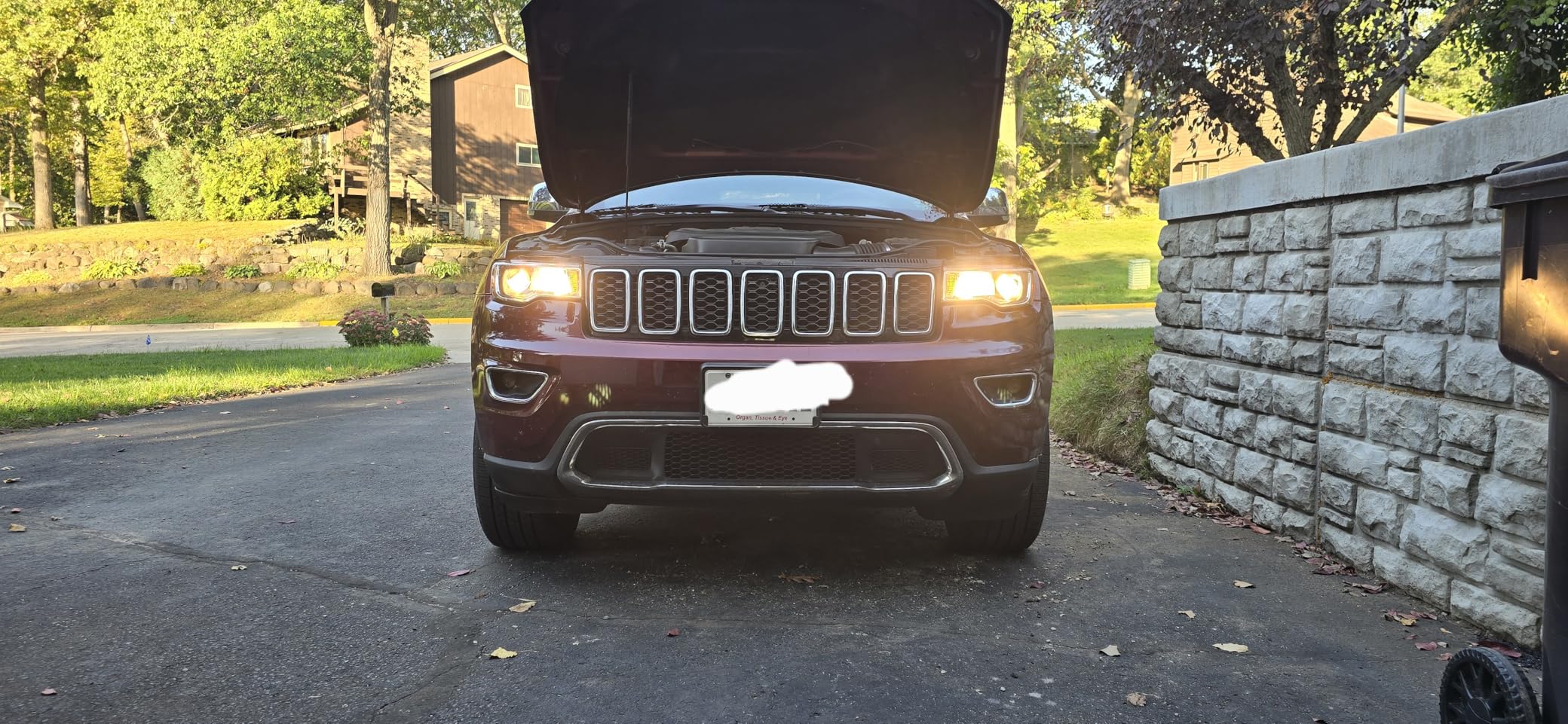Bright headlights make driving safer and more comfortable, especially at night. If your car's lights seem dim or you want better visibility, LED headlights are a great solution. Many drivers worry that installing new headlights might be too complex, but the process is actually quite simple. With some basic tools and clear steps, you can upgrade your car's headlights and enjoy better lighting on every drive.

What Tools Do You Need for LED Headlight Installation?
Essential Tools for the Job:
- Basic socket set or wrench set (8mm to 14mm)
- Phillips and flathead screwdrivers
- Clean microfiber cloth
- Work gloves (non-powdered, latex-free)
- LED conversion kit for your car model
- Small container to keep screws organized
- Flashlight or headlamp for better visibility
Additional Accessories for a Smooth Installation
To help your installation of LED car headlights go more smoothly, a few other items can be very helpful. The anti-seize compound prevents corrosion on bulb contacts, and electrical tape and wire ties organize things nicely. Isopropyl alcohol wipes are good for wiping connections clean, and a small brush gets dust off parts. There are some cars that will need an LED warning canceler to prevent dashboard warnings. Having your owner's manual handy to refer to is also a good thing.
A few crafty suggestions can save you time and trouble: Keep your workspace well-organized and well-lit, and drape a towel over the fender of your vehicle to protect it from scratches. Taking a photo of the original setup with your cellphone can be a lifesaver when reassembling. Most of these items are household objects you probably already have handy - typically, you'll only need to buy the LED kit and maybe some anti-seize compound.
How to Get Your Car Ready for LED Headlights?
After collecting your equipment, some key checks will ensure your LED car headlight installation is smooth. These prep steps avoid issues and guarantee your new lights will function correctly.
Check Your Car's Compatibility
Reference your owner's guide for your automobile's make, model, and year. Identify your current headlight bulb and write down the code number on it - it's marked on the bulb or in the handbook. Consult with the manufacturer of the LED kit or online to verify the lights will be suitable for your automobile. Some autos need special items for LED light operation, so verify this before buying anything.
Know Your Car Headlight Type
Look at your LED car headlights - it's very simple. If you notice two bulbs on each side, you have separate bulbs for high and low beams. If you only have one bulb per side, it does both high and low beams. You snap a quick photo of how everything is connected. This will be useful when you're putting in the new lights.
Safety Steps Before You Start
Let your car rest for 30 minutes after you've been driving. Park on a flat surface and set your parking brake. Disconnect the black (negative) battery cable - this prevents electrical problems. Have good lighting where you are. Move people and pets away from the area. Use a flashlight or headlamp so you can see clearly.
How to Install LED Car Headlights?

Before you start, lay out all your tools on a clear work surface near your car. The step-by-step guide leads you through each install step, normally taking an hour for both lights.
Step 1: Getting Everything Ready
Place your wrench set, screwdrivers, gloves, and LED kit in a convenient location. Wear your gloves - they prevent skin oils from getting on new bulbs. Double-check that your LED kit is compatible with your vehicle's specifications. Cover your fender with a towel to prevent scratching while you work.
Step 2: Getting to Your Headlights
Open your car hood and hold it steady. Many cars permit you to access headlights through the engine space - check your manual if the opening isn't evident. In some cars, there's a plastic molding on top of the headlight housing; gently pry this away and put the screws you find in your parts collection.
Step 3: Taking Out Old Bulbs
Unplug the old bulb - it should have a clip that you press to release. Rotate the old bulb to the left to remove it. Some bulbs have a metal clip holding them in place - press on the sides of the clip to release it. Place old bulbs safely aside - they may be hot if just used.
Step 4: Putting in New LED Bulbs
Hold the new LED bulb by the base, never handle the glass or LED surface. Place it just like the old one was taken out - it can only be put in one way. Secure any rings or clips that keep it in place. Insert the power connector - you will hear a click. If your kit contains a driver box, install it out of reach of hot engine parts.
Step 5: Testing Your Work
Plug in your battery again. Turn on your headlights and test both low and high beams. Ensure that both lights are functioning and aimed correctly. If one light does not function, verify its connections. Some vehicles may have a warning light - do not worry, this is normal and your LED kit's canceler will eliminate it.
Step 6: Finishing Up
Once all the pieces function, reinstall any covers that you removed. Secure all clips and screws but do not overtighten. Remove any fingerprints from headlight covers. Close your hood securely. Take your car for a quick drive at night to make sure everything is in proper working condition.
What Mistakes Should You Avoid When Installing LED Headlights?
Even experienced DIYers can run into problems when installing LED headlights. Learning from common mistakes will save you time and protect your new investment. Here are the key errors to avoid, based on real experiences from many installations.
Mistake #1: Buying LEDs Without Checking If They'll Fit Your Car
Many people waste money by purchasing LED lights that aren't compatible with their vehicle. Before buying, write down your car's exact make, model, and year. Look up your current bulb type (like H11 or 9005). Check if your car needs special adapters - some cars need extra parts to work with LEDs. Don't trust "universal fit" claims without verifying. Call the manufacturer if you're unsure.
Mistake #2: Getting Skin Oils on the LED Bulb
This is a simple but expensive mistake. Touching the glass or LED part of the bulb with bare fingers leaves behind oils that can burn and damage the light. Always use clean gloves when handling LED bulbs. Only hold the bulb by its plastic or metal base. If you accidentally touch the bulb surface, clean it right away with an alcohol wipe before installing.
Mistake #3: Rushing to Put Everything Back Together
Don't get excited and reassemble everything before testing. Many people make this mistake and end up taking everything apart again. Before putting back covers and panels, connect the battery and test both high and low beams. Make sure:
- Both lights work properly
- They're equally bright
- No warning lights appear on your dashboard
- The beams are aimed correctly
If anything's wrong, it's much easier to fix now than later.
Get Better Night Driving With Your New LED Headlights
Putting in LED headlights isn't as hard as it might seem, and it really pays off when you're driving at night. If you follow the steps we've covered, you can get this done in about an hour. Just remember the basics: check that the lights will fit your car, wear gloves when handling them, and test everything before putting the covers back on. Don't worry if you need help - that's what the manufacturer's support team is for. After you're done, take your car for a quick drive at night to enjoy your work. You'll notice right away how much better you can see the road, and your car will look more modern too. The time you spend being careful with the installation will give you years of better, brighter driving ahead.
Common Questions About LED Headlight Installation
Q1: Will LED headlights drain my car's battery faster?
No, LED headlights use less power than the traditional halogen bulbs. They are likely to use 20-30 watts compared to 55-65 watts used by halogens, stressing your vehicle's electrical system less.
Q2: Why do my LED headlights flicker sometimes?
Flickering does usually necessitate that you hook up a load resistor or a CANbus adapter. Your automobile computer is geared to see halogen bulb elevated power consumption and these adapters con the computer into being able to function correctly with LEDs.
Q3: Do I need to adjust my headlight aim after installing LEDs?
Yes, usually. LED bulbs work in a different manner from halogens, and you will likely have to re-aim your headlamp. Most cars have adjustment screws on the headlamp casing - consult your handbook for where they are.
Q4: Can I switch back to halogen bulbs if I don't like the LEDs?
Yes, installation is completely reversible. Just keep your old bulbs and any taken-out original components. You can always revert at any time without having made any permanent alterations to your vehicle.
Q5: What should I do if one LED headlight is brighter than the other?
First, check that the bulb is properly seated in the socket. If not, check that the two bulbs are the same brand and batch. If it persists, one of your LED drivers is likely bad and needs to be replaced.
Read More
- Why LEDs Are the Ultimate Upgrade for Halogen Replacement? – RIMTHIN
- Car Headlights Acting Up? Troubleshooting & Upgrade Guide – RIMTHIN
- LED Headlights: The Ultimate Guide To Brighter Night Driving – RIMTHIN
- How to Connect Fog Lights on a 2013 Chevy Malibu Without Hassle? – RIMTHIN
- Car Headlights Acting Up? Troubleshooting & Upgrade Guide – RIMTHIN




